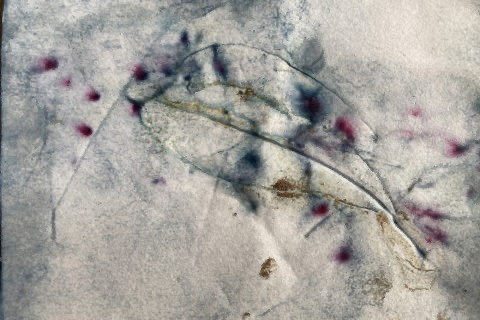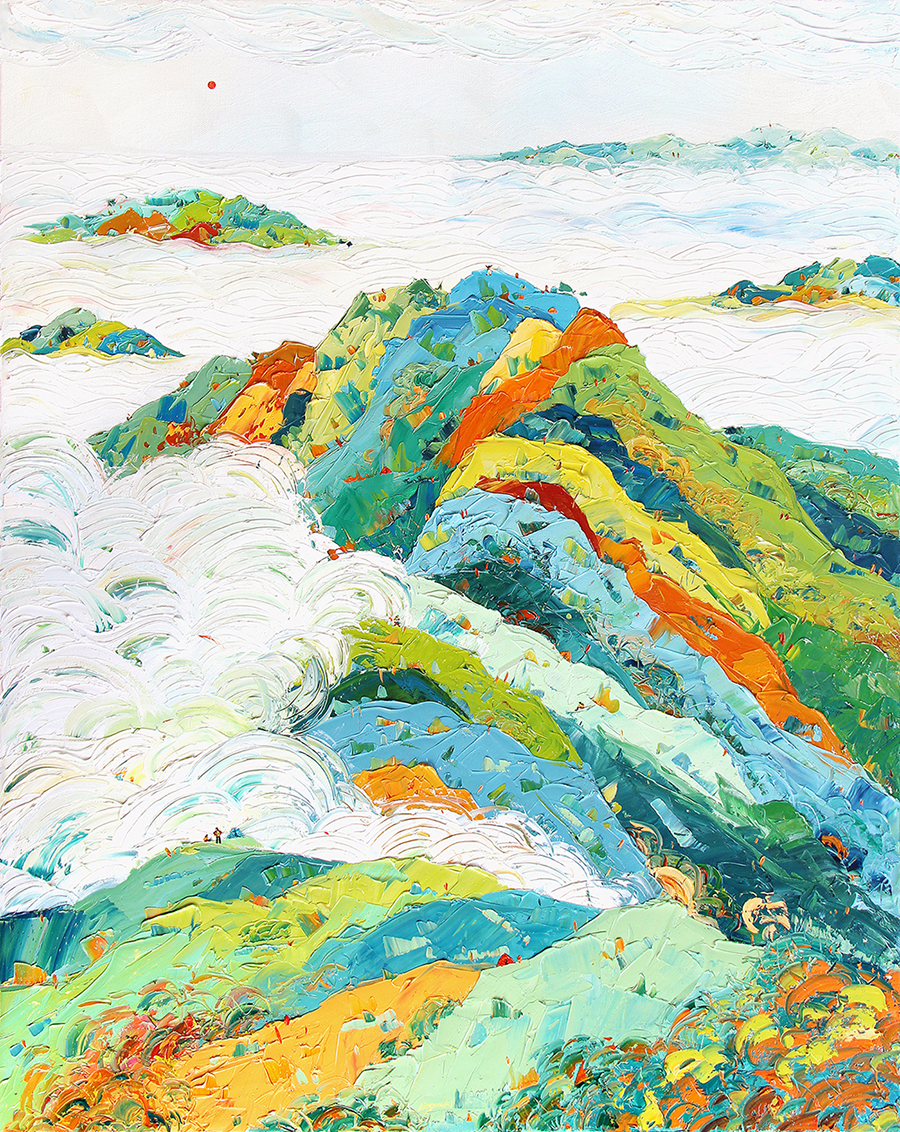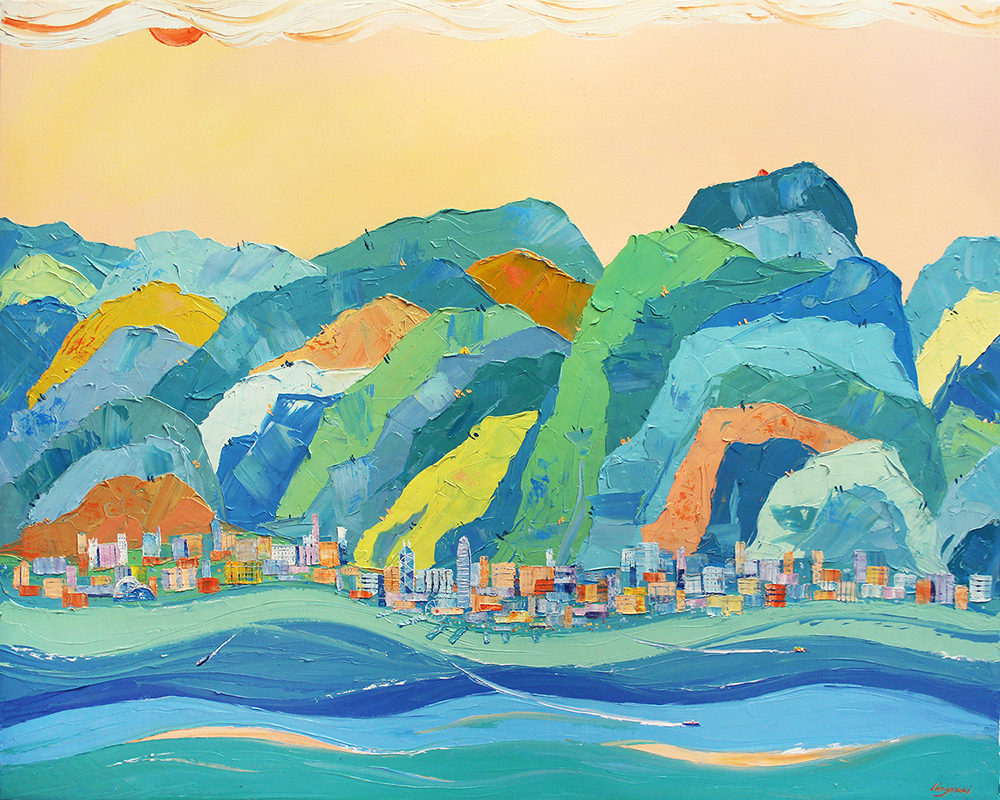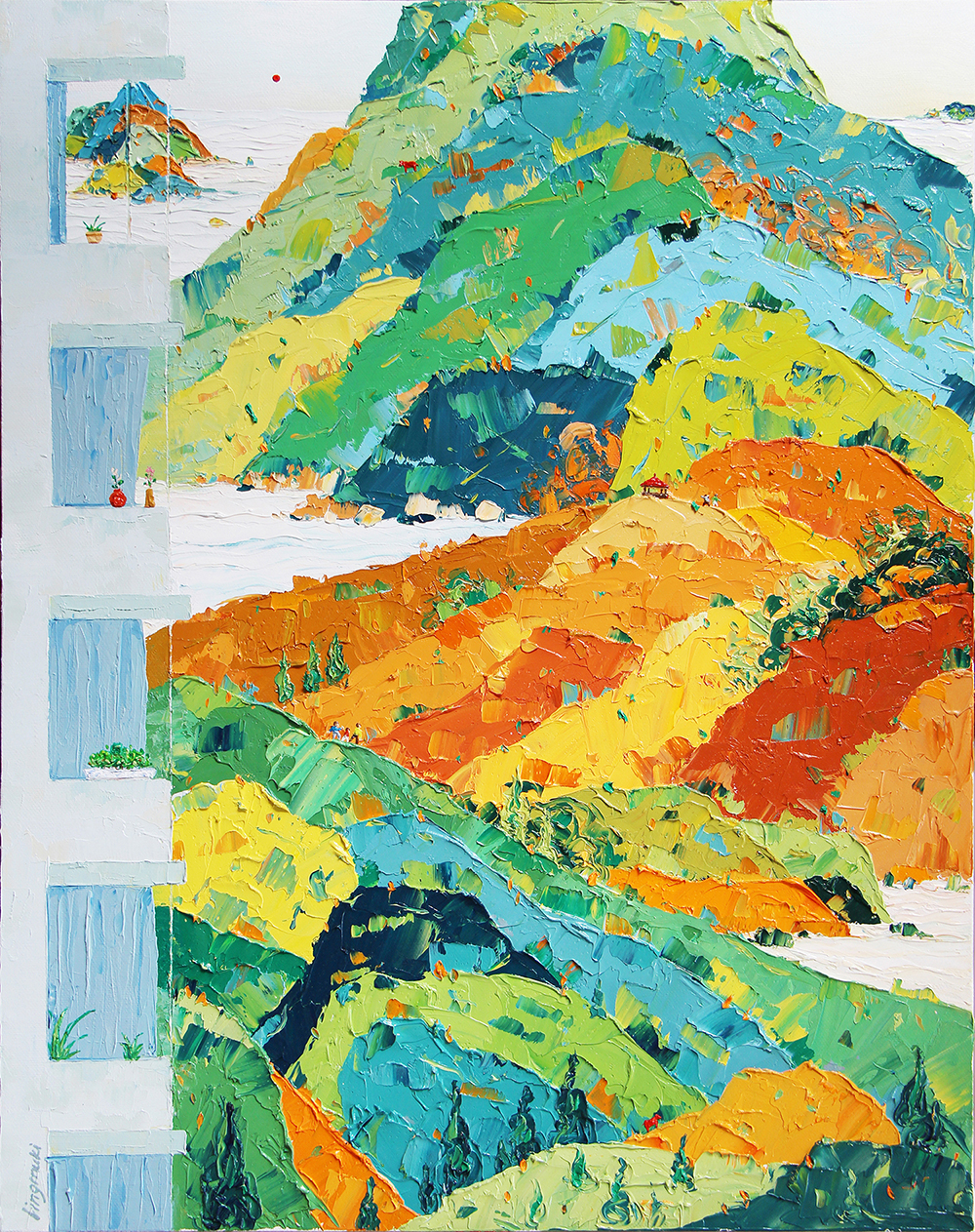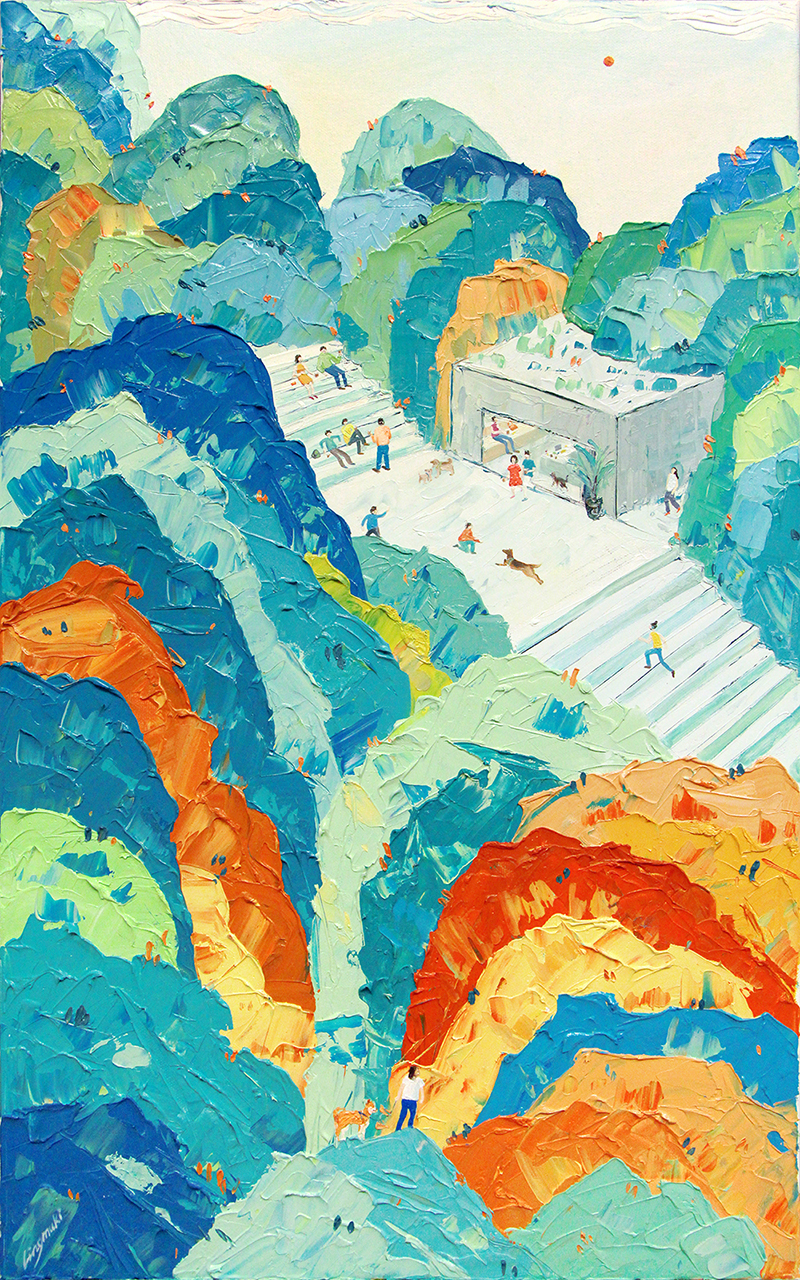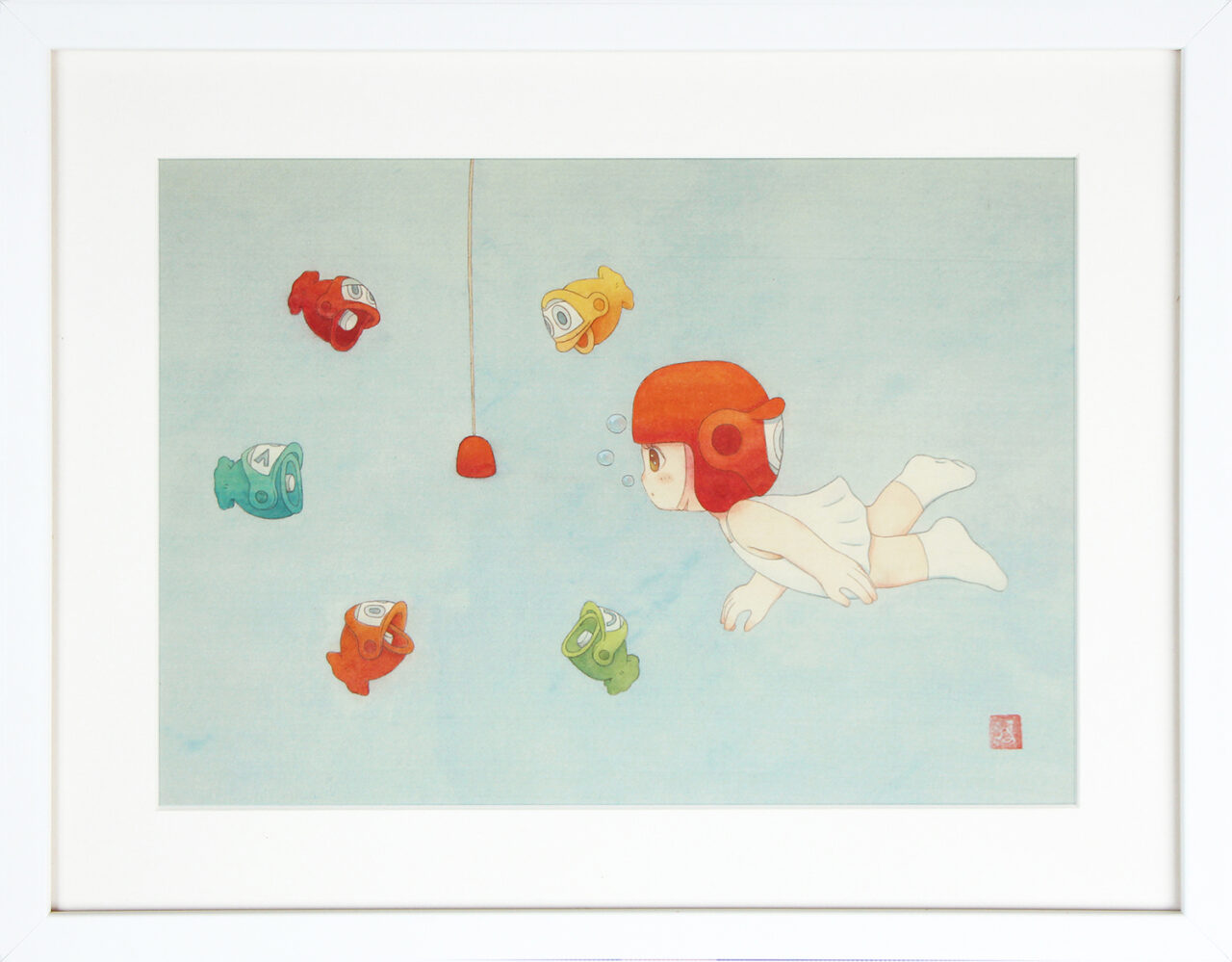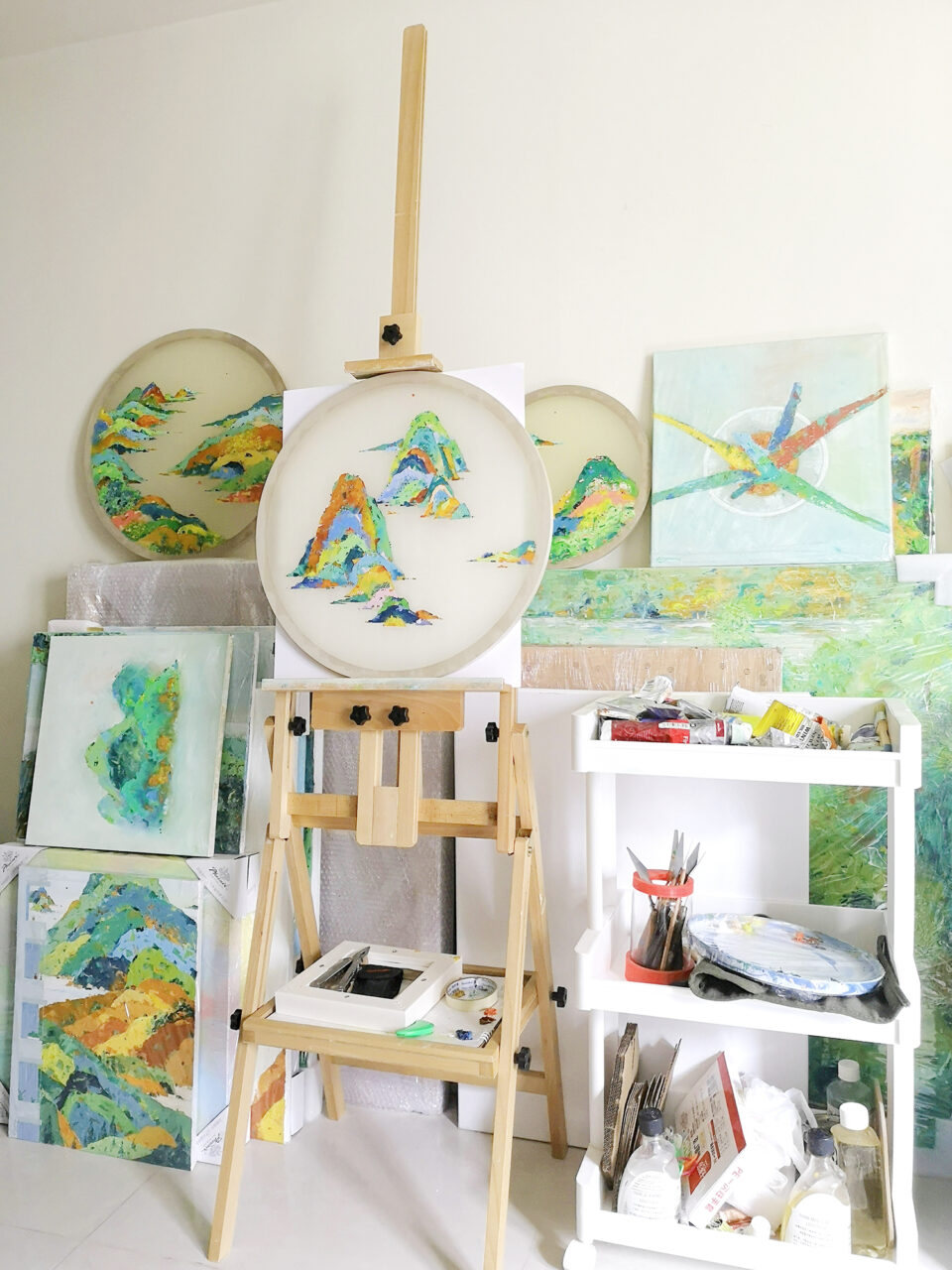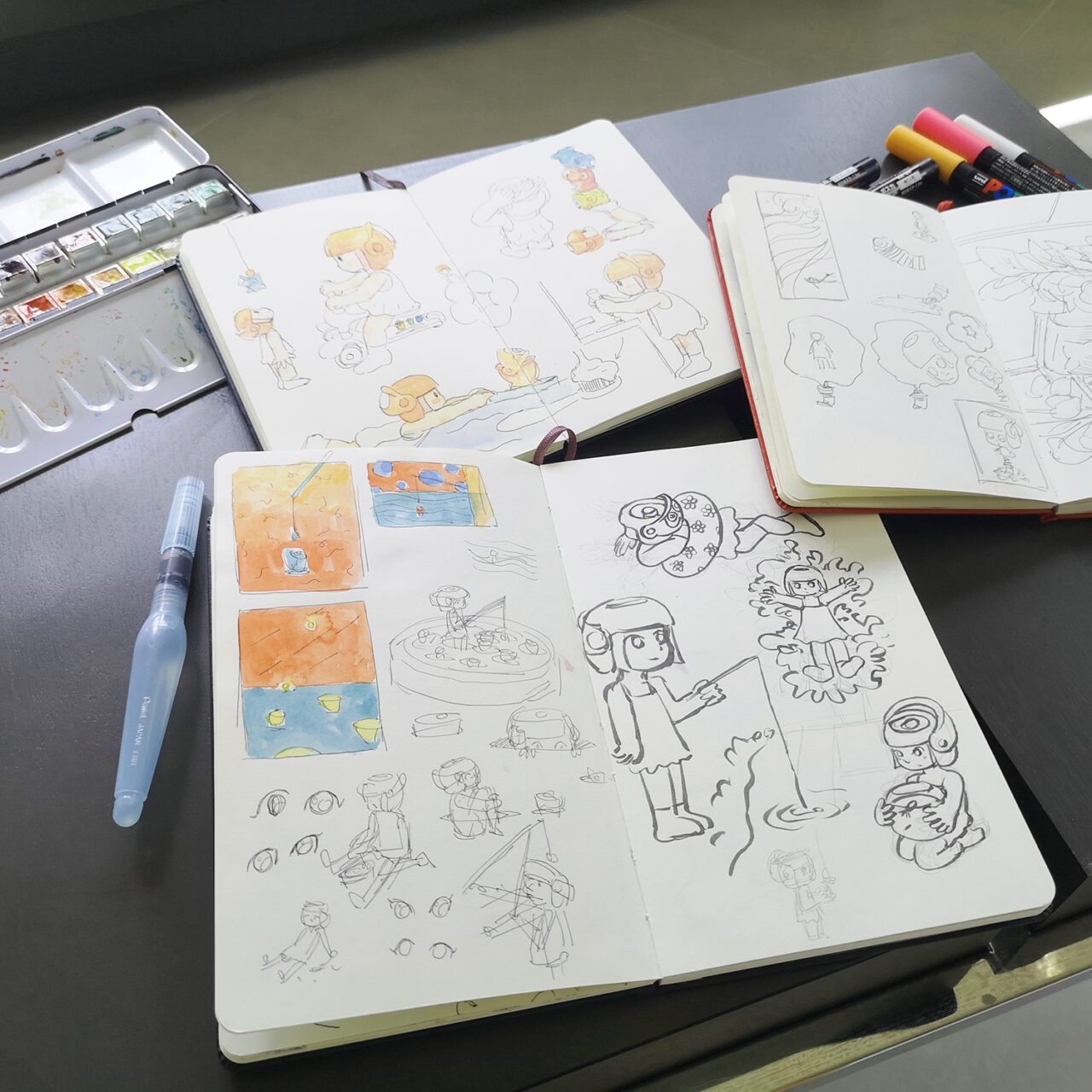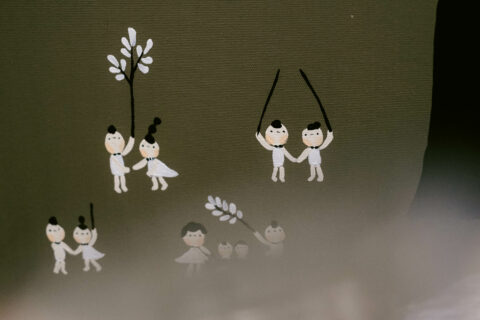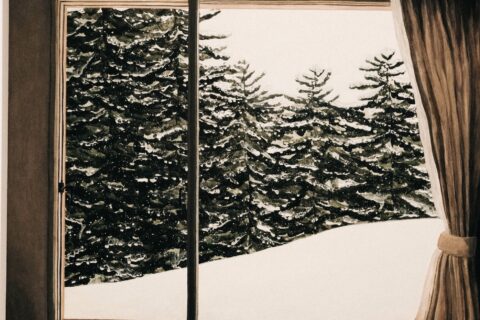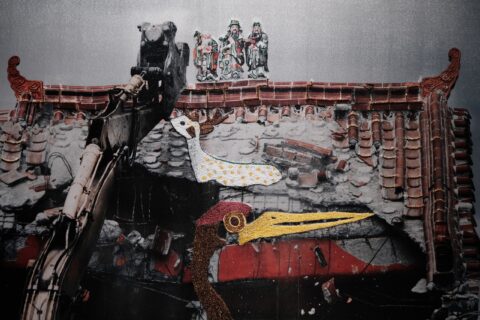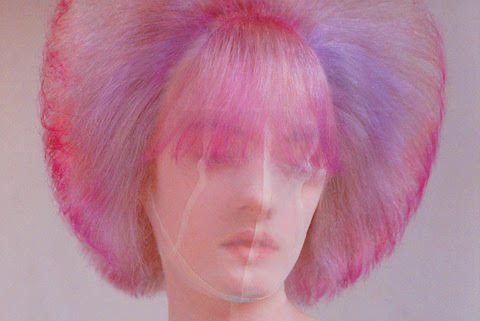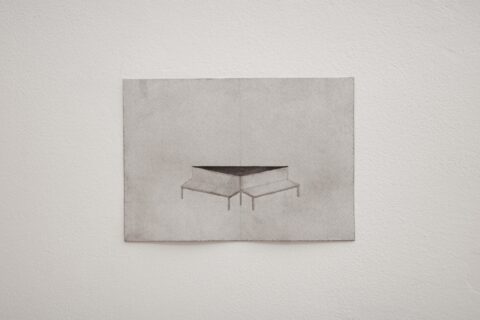在早前的 Affordable Art Fair 遇上年輕的藝術家 Ling,她的風景畫擁有滿滿的柔和色彩在傳統中國山水畫的形態裡,顯得份外清新明亮,厚重的顏料一層層地堆疊出「可行、可望、可遊、可居」的造境層次,讓眼睛在畫中流連忘返。小時在南京長大的她說油畫山水代表著多重自我的結合,生活在兩座看似對立的城市裡,有時連結,有時脫節,於縫隙中尋找到一套面對世界的哲學。那不是單一的答案,而是像洋蔥般,一層一層的,表面平靜、和諧,也帶點不穩定、衝突,還有滲透著憂鬱與永恆的追求。
At the recent Affordable Art Fair, I discovered the work of young artist Ling Lin, whose bright and refreshing landscape paintings caught my attention. Drawing on the traditional Chinese shan shui landscape painting style, Lin employs thick layers of pigment to create scenes that invite viewers to “walk, view, travel, and live.” Growing up in Nanjing and now living between two seemingly opposing cities, Ling explained that oil landscape painting represents a combination of her multiple selves. Although she sometimes feels connected to and sometimes disconnected from her surroundings, she has found a philosophy for facing the world. It’s not a single answer, but rather, like an onion with layers upon layers. While the surface appears calm and harmonious, there are many different layers inside that sometimes evoke a sense of instability and conflict, as well as a feeling of melancholy and a longing for eternal pursuit.
O:Obscura
L:Ling Lin
O:為什麼以油畫的方式來畫山水畫?
L:我在南京長大和生活,高中畢業才來香港。成長時學習的中國文學、古詩詞和古畫中的審美觀對我有很深的影響,尤其是道家中的「無為」、「順從自然」等觀念,影響著我的創作。同時,香港多元化、多姿多采的生活也為我帶來衝擊,生活裡也會有壓力和不順心的事,但當我回到自然,讓我感到被治癒,放下城市裡的煩惱。
南京和香港很有距離感,但自然是一條橋樑,連繫著我截然不同的人生經歷,所以我特別喜歡繪畫自然,透過風景畫表現一些東方傳統的觀念,並連接現在國際化的現代生活。油畫的顏色可以很鮮艷,同時表現很厚重的質感,很適合表達多姿多采的香港,也能表達一些非常強烈的情感。
O:你是怎樣透過繪畫技巧來表達這些強烈情感?
L:與西方畫以光暗面來表現物件的立體感不同,中國傳統的畫法比較扁平一些,為了表現物件的立體感,我會刻意把顏料堆得很高,從顏料的疊放,能看到我的手怎樣揮舞,從而表達激動的心情,留下了靈魂的狀態,也算是又具象又抽象的半寫意效果吧。
另外,我會以白色顏料作留白,看似是雲,又似是海,近看如雕塑般的紋路,都是油畫刀刮出來的。中國畫只用一支毛筆就能創造不同的質感,讓我感到很厲害,所以我也想做多點實驗性的東西,嘗試以刮刀做出不同的質感來融入山水之中。
O:豐富的用色如何幫助你表現大自然的意境?
L:當我們想表達大自然的生命力時,很自然地想到綠色,其實有很多顏色也能表現生命力的。葉子在黃昏的光線下帶點泛黃、深啡;而清晨的光線則比較冷,葉子上的綠是偏藍的,這些顏色的變化也是生命力的表現。像秋天時葉子掉落了,也是為春天發芽的新葉作滋養。透過這樣的色彩運用,提醒大家自然是很包容的,無時無刻都在很有生命力的狀態下。
O:細看畫中的人物都很細小,為什麼會這樣畫呢?
L:這點也是受中國傳統的山水畫所影響,畫高山時,也會畫些很小的人和動物在點綴,把能量和生命力帶到自然環境中,讓層次豐富起來。山水畫中的漁夫、垂釣的人,也反映著時代的特徵。這些隱藏在細節中的人物,不影響整體的構圖的之餘,也讓畫變得更耐看。中國畫比較傾向表達內心的感受,而不是精準地刻畫一些畫面,所以你看上面是一種風景,眼游到下面時又是另一種風景,我也有把這種散點透視融入我的創作之中。
O: Why did you choose to do shan shui landscape painting with oil painting techniques?
L: I was raised in Nanjing and only moved to Hong Kong after graduating from high school. The aesthetic values and perspectives I acquired from Chinese literature, classical poetry, and ancient paintings during my upbringing profoundly influenced me. The concepts of wu wei (non-action) and conforming to nature in Taoism, in particular, have greatly influenced my creative work. Moreover, the diverse and colorful life in Hong Kong has also had an impact on me, and there are also pressures and unpleasant things in life. However, when I return to nature, I feel healed and can let go of the worries of the city.
Despite the distance between Nanjing and Hong Kong, nature serves as a bridge that connects my vastly different life experiences from these two cities. This is why I particularly enjoy painting nature and using landscape paintings to present traditional oriental concepts while connecting them to the modern world. Oil painting, with its heavy texture and vibrant colors, is particularly suitable for depicting the diverse and colorful side of Hong Kong, as well as conveying strong emotions.
O: How do you express these strong emotions using different painting techniques?
L: Unlike the western paintings which use light and shadow to create a sense of three-dimensionality, Chinese paintings often appear more two-dimensional. So in order to define a three-dimensional object, I purposely apply layers of paints, allowing the brushstrokes to express my emotions and hint at my state of mind. The final work is both representational and abstract.
In addition, I use white paint to create negative spaces that resemble clouds and sea. If you look up close, you can see the sculptural-like texture created by scraping oil paint with a palette knife. I am fascinated by the Chinese brush’s versatility in producing various textures and plan to experiment with the palette knife to create new textures and incorporate them into my landscape paintings.
O: How does the use of vibrant and rich colors help you depict the essence of nature?
L: We naturally think of green when we want to show the vitality of nature; but there are actually many other colors that can also represent vitality. For example, leaves can have a yellowish or deep brown tone in the light of dusk, while the green on the leaves is bluer in the light of dawn. These color changes are also expressions of vitality. When the leaves fall in autumn, they nourish the new leaves that will sprout in spring. Through the use of colors, I want to remind everyone that nature is very inclusive and always in a very lively state.
O: The figures in your paintings are very small. Why do you paint them this way?
A: It is under the influence of traditional Chinese landscape paintings where mountains are often embellished with tiny people and animals to bring energy and vitality to the natural environment, adding depth and texture to the composition. The fishermen and anglers in the paintings also reflect the characteristics of the times. These hidden details do not affect the overall composition, but make the painting more enjoyable to look at. In Chinese painting, the focus is on expressing inner feelings rather than depicting the actual scenery. So when you look at my paintings, you may see one type of scenery at the top and another type of scenery as your eyes move down; I try to incorporate this scattered perspective into my creations.
O:可以談談你另一個創作系列《Little Muki》嗎?它的風格與油畫山水系列各走兩端,是代表著你不同的面向嗎?
L:Little Muki 這個角色的概念來自小時候玩的釣魚玩具,一盆水裡放滿口裡附有磁石的塑膠魚,當它張開嘴的時候,人們把附有磁石的魚桿把它釣起來。Little Muki 頭上也有一個磁石,有時候也會有附有磁石的魚桿在控制她,就像現實生活中有許多我們控制不了的力量,如生活的壓力,人與人之間的牽絆,有好的也有不好的,同樣是不可控。
但是 Little Muki 也會玩釣魚的遊戲,代表生活中也有一些我們可控制的東西,例如是想買的東西、吃的東西,讓自己開心起來,像小朋友般懂得怎樣取悅自己。成年人反而被頭上的力影響太多,忽略了生活中微小的快樂。Little Muki 讓大家重拾童年的回憶,提醒我們維持小孩單純的心,或許能對世界有新的想法,找到更多生活樂趣。
我創作的油畫山水是對外在環境、大自然的一些想法,Little Muki 則是回看我的童年和成長,是關於自身的思考。這兩個系列讓我的創作更完整,很多時候我都是來回地創作這兩個系列,平滑、安靜的 Little Muki 平衡畫風景畫時很用力的狀態和緊張的情緒,我沒法把它們融合在一起,只能分開兩條不同的路來探索我自己和這個世界。
O: Can you talk about your other series, Little Muki? Its style is very different from your oil landscape painting. Does it represent your other aspects?
L: The concept for the character Little Muki originated from my childhood experience playing with a fishing toy. The toy was a plastic fish with a magnet in its mouth, and players would use a fishing rod with a magnet to catch it when it opened its mouth. Similarly, Little Muki has a magnet on her head that is controlled by a fishing rod with a magnet. This concept reflects the reality that there are many forces beyond our control, such as the stresses of everyday life and the complexities of relationships with others; they could be both good and bad, but regardless, they are beyond our control.
Little Muki, also engages in the act of fishing. It signifies that there are aspects of our lives that we can control. For instance, we can choose what we buy or eat to bring us happiness, similar to how children please themselves to achieve happiness. Adults are often influenced by external factors, causing them to overlook the small moments of happiness in life. Little Muki serves as a reminder to reconnect with our childhood and to maintain a sense of innocence and purity. This may offer new insights into the world and bring more joy to life.
My oil landscape paintings reflect my thoughts on the external environment and nature, while Little Muki is a reflection of my childhood and upbringing. These two series together make my creative journey more complete. Often, I switch back and forth between the two series. The smooth and quiet Little Muki serves to soothe the intense emotions I experience while painting landscapes. I cannot merge them together, so I explore myself and the world through two different paths.
